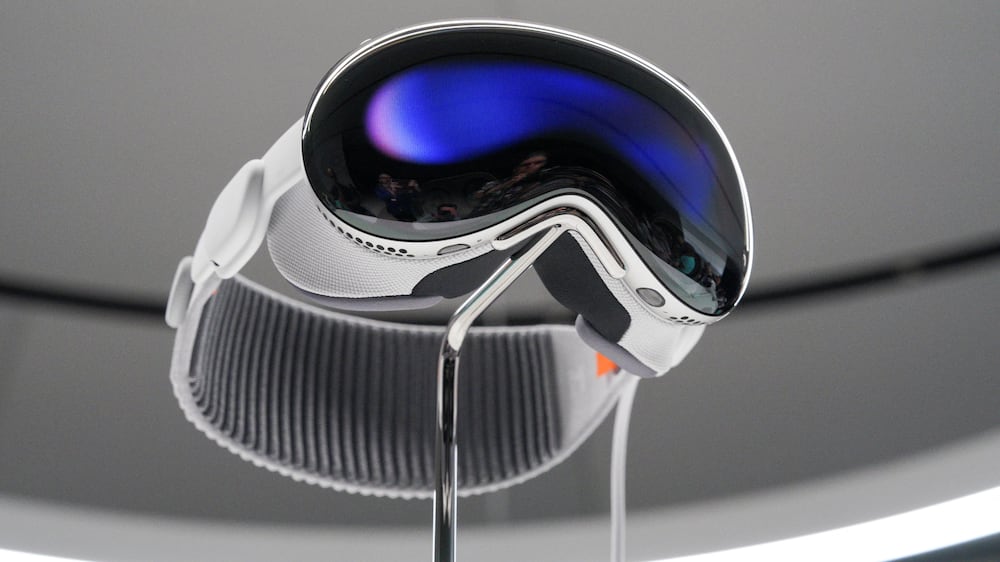Apple has had to make major cuts to production forecasts for its first augmented reality Vision Pro headset owing to design complexities and manufacturing difficulties, it has been reported.
The tech major is preparing to produce fewer than 400,000 units in 2024, a significant cut from an earlier, internal sales target of 1 million units in the first 12 months, sources close to Apple and Luxshare, the Chinese manufacturer that will initially assemble the device, told the Financial Times.
Luxshare is currently Apple’s only assembler of the device, the FT reported.
Apple unveils long-awaited Vision Pro headset

Separately, two China-based exclusive suppliers of components for the Vision Pro said Apple was asking them for enough materials to produce 130,000 to 150,000 units in the first year.
The Cupertino-based company unveiled the Vision Pro headset, priced from $3,499, at its Worldwide Developers Conference last month. It was the company’s first major product launch since the Apple Watch in 2015.
“It’s the first Apple product you look through, and not at,” chief executive Tim Cook said at the conference in Cupertino, California. “This marks the beginning of a journey.”
“Just as the Mac introduced us to personal computing and iPhone introduced us to mobile computing, Apple Vision Pro introduces us to spatial computing,” Mr Cook said.
Apple, which described the technology as its “most ambitious product”, initially hoped to sell three million devices in the first year, but industry experts said fewer than 500,000 would be sold in the first 12 months because of the price.
Apple’s market valuation closed above $3 trillion on Friday, three weeks after the announcement of the headset.
An augmented reality headset gives a virtual reality experience for three-dimensional simulations, video games and other applications such as film.
The devices use organic light-emitting diode (OLED) or liquid crystal display screens together with head motion monitoring sensors to produce realistic-looking 3D images.
Google has also pulled the plug on its Project Iris AR glasses after efforts to develop the device apparently went awry, the Business Insider reported last week.
Work on the device was set aside earlier this year after facing a number of setbacks in its development. Layoffs and restructurings at the California-based company, along with the departure in February of Google's head of VR, Clay Bavor, also contributed to the device's fate.
Alphabet-owned Google will instead focus on developing software for AR glasses, which it intends to license to other companies.
In September, Lenovo, the world's biggest maker of personal computers, unveiled its Glasses T1, which projects the screens of smartphones, laptops and desktop computers in front of users' eyes.
Facebook owner Meta introduced its Stories smart glasses in collaboration with eyewear maker Ray-Ban in September 2021. Prices for the device start from $299, with a variety of options that can be customised to appeal to a wider set of users.
A prototype version of Meta's glasses is expected to be distributed to developers for testing early in 2024, according to The Information.
Meta bought VR start-up Oculus for more than $2 billion in 2014 to strengthen its position in the industry.
Samsung, the world's biggest manufacturer of mobile devices, filed patents for “Galaxy Glasses” in March, which has been taken as a signal that it is ready to throw its hat into the ring.
Companies are investing heavily into the development of smart glasses as more uses emerge for the technology, running the gamut from games to fitness apps.
The global AR headset market is expected to reach almost $5.9 billion by 2030, from $4.1 billion last year, growing at an annual growth rate of 5.3 per cent between 2023 and 2030, according to business intelligence firm Vantage Market Research.
Apple has already flagged that its “spatial computing” headset device will not go on sale until “early next year”.
Analysts say the scaling back of production of the Vision Pro headset has more to do with supply chain problems than giving developers time to create apps for the device, according to the FT report.
One of the major hurdles Apple faces is the manufacturing of the device’s sleek screens, the report said.
They consist of two micro-OLED displays – one per eye – and an outward-facing, curved “lenticular” lens.
The micro-OLED displays used in the prototypes demonstrated in June were supplied by Sony and chipmaker TSMC, according to the FT.
Sony has been cautious about the growth of the mixed reality headset market and is reluctant to step up production significantly, Terushi Shimizu, head of Sony’s semiconductor unit, told a recent media roundtable.
The screens are the most expensive components of the Vision Pro.
Apple has been unhappy with suppliers’ productivity, especially with the yield of defect-free micro-OLEDs, the FT reported.
Meanwhile, Apple is already working on later generations of the headset, including a more affordable version that is expected to appeal more to mass-market consumers, the FT said.
The tech major is working with Korean display makers Samsung and LG on this second-generation headset, according to the report.
The iPhone maker has explored using other display technologies, including mini-LED, to drive the price lower, the FT said.






